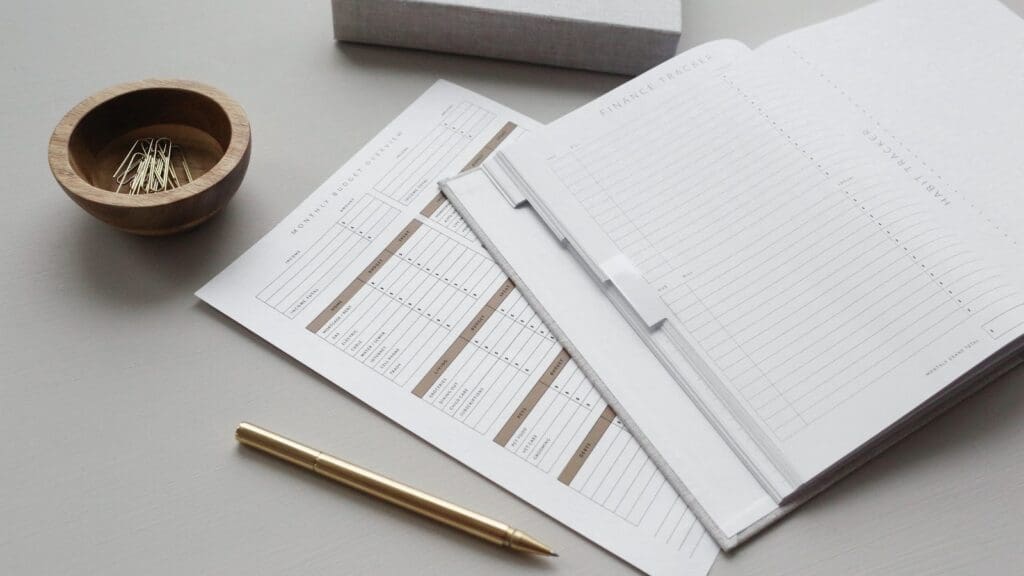Australian Tax Basics Explained By An Expert Tax Agent
They say two things are certain…death and taxes. While tax is definitely certain it can vary wildly across different countries, or as your circumstances change. Whether you’re new to the workforce, venturing into business ownership, or completely new to Australian tax it can be confusing! Here are the basics of the Australian taxation system to help you plan in advance, and keep the ATO smiling.
Why do we pay tax? Where does it go?
We pay tax to the Australian Government based on the income we earn. This includes income from business, government payments, or employer payments. Taxation money forms the brunt of our country’s budget, which is distributed across essential government services such as health, education, defense, roads and railways and Centrelink benefits.
The Australian Tax Office (ATO) manages everything regarding Australian tax. How much tax you are required to pay depends on the level of your income, the size of your business, your tax deductible expenses and a whole swathe of other factors. Whether employed, an individual or a business, it’s extremely important to calculate your taxation accurately to ensure you’re on the right side of the ATO and therefore, strict Australian taxation laws.

How much tax do you need to pay?
Australia works on a ‘progressive tax system,’ meaning the more income you earn, the more tax you’re required to pay. There is a tax free threshold of up to $18,200 per year. If your income falls on or below that figure, you’re not required to pay tax. In any given year, you will not be taxed for the first $18,200 of your earnings under the tax free threshold; but as soon as your income rises over that amount, you will begin to be taxed for every dollar earned. The lowest tax rate begins at 19% and rises in set increments. Calculate how much you’ll be taxed based on your expected annual income as an individual.
What types of Australian taxes are there?
Just to keep things interesting, there are a plethora of taxes applicable to individuals and businesses. In fact, Australians pay at least 125 different taxes each year! From luxury car tax and agricultural levies to motor vehicle taxes and property taxes. We are a land that is not short on tax, it’s part of our day to day.
| Main types of tax for individuals Income Tax Total assessable income (wages, business income, interest, rent and dividends) minus deductible expenses. GST (Goods and services tax) You pay 10% GST on any goods and services, such as prepared food and beverage, trades and service based businesses. GST is paid for when you settle the account for the service – it does not need to be paid in your tax return. Fringe benefits tax: Taxable non-cash benefits provided to employees by their employer such as use of a company car, housing allowances and payments of private expenses. Capital gains tax: Tax imposed on gains resulting from the sale of assets. Capital gains are included in your assessable income and taxed at your applicable income tax rate. Medicare Levy: A 1.5% Medicare levy is taxed at a flat rate of 1.5% of your taxable income. If you do not have private health insurance a 1-1.5% addition levy surcharge is applicable. | Main types of tax for companies Company tax Paid by companies out of their profits. Company tax is calculated at 25% of the profits for small businesses with less that $2 million in revenue. GST (Goods and Services Tax) The 10% GST you have charged your customers for goods and services must be paid to the government. Luxury car tax (LCT) 33% If you’re planning on buying or importing luxury cars into Australia from overseas prepare to be hit with a flat rate tax of 33% if the vehicle is valued at over $60K or $75K! Superannuation tax: Each employer must pay superannuation on top of their employees wages on their behalf. The Super guarantee is the minimum you must pay which currently stands at 9.5% of your employee’s earnings. Payroll tax: Determined by each Australian State and Territory, payroll tax is imposed on employers whose annual paid wages exceed the state-set amount. Generally it is between 3 and 7% |
What is the tax free threshold?
As an employee, the first $18,200 of your annual income is not taxed under the tax-free threshold – provided you claim the tax free threshold through your employer. If you have more than one job and your income exceeds $18,200 overall, you can only claim the tax-free threshold from one employer. Typically, you would claim the tax free threshold from the job in which you earn the higher income.
When you begin work with a new employer you’re required to complete a Tax File Number Declaration form. At question 8 the form asks “Do you want to claim the tax-free threshold from this payer?” You’ll need to answer ‘yes’ in order to claim the threshold.

PAYG (Pay as you go) for Businesses
The PAYG Withholding
As an employer, you have a responsibility to help your employees and contractors meet their end of financial year taxation liabilities. You collect PAYG withholding amounts from payments you make to employees, contractors and businesses that haven’t provided you with their ABN (Australian Business Number). You will need to register for PAYG withholding and report the amounts withheld on your activity statements. The amounts you have withheld from wages and other payments must be paid to the ATO. Your employees and other payees should be provided a PAYG withholding payment summary.
PAYG Instalments
PAYG instalments apply to individuals, organisations or trusts who earn a certain amount of income. There are special rules and exceptions applicable to different business and company structures. PAYG Instalments are quarterly payments towards the expected income tax payable for the financial year. This system helps you and your business meet your annual income tax obligations and keep on top of profitability and cash flow.
Other taxes
Depending on your circumstances and activities over the financial year other taxes may be applicable:
- Stamp Duty
- Land Tax
- WET Tax (Wine Equalisation Tax)
- Motor Vehicles Duty
- State and Territory Taxes
- Withholding Taxes
- Excise Duty
- Customs Duty
When and how do you pay tax?
As mentioned above, many businesses will pay taxes quarterly (as they go) on behalf of their employees and for their business. Businesses registered for GST are required to lodge a BAS (business activity statement). The ATO will automatically forward your BAS once you’ve registered your ABN and for GST. The BAS declares and helps you pay your accrued GST, PAYG Instalments and PAYG Withholding, among other applicable taxes.
When you are required to lodge your EOFY (End Of Financial Year) Tax Return, if you have correctly calculated and paid your BAS, you’ll have less tax to pay, and that’s something to celebrate!
Lodging Your Tax Return
The financial year runs from the 1st July to the 30th June. If you are lodging your own return it is due for lodgement by the 31st October. Individuals and sole traders can lodge your own tax return online Via MyTax. You will need a myGov account linked to the ATO.
You can also lodge your return with a registered tax agent. They will help you correctly calculate and prepare your return for a fee. It is vital to get your tax return right and lodge on time to avoid potentially hefty penalties. Unfortunately, some are less than honest when it comes to tax time, which can have a negative effect on our economy, and isn’t fair on those doing the right thing. To combat this issue the ATO has put in place a Tax Avoidance Taskforce.
Tax avoidance Taskforce
Established in 2016, the Tax Avoidance Taskforce was developed to ensure everyone – including large businesses and wealthy individuals – is paying the correct amount of tax in Australia. The Government has funded the task force with a cool $679 million over four years to ensure fairness and integrity of the taxation system for all Australians.
If tax avoidance is identified, an action is taken and penalties may be imposed. You can be penalised for:
- Making a false or misleading statement or taking a position that is not reasonably arguable
- Failing to lodge a return or statement on time
- Failing to withhold amounts as required under the PAYG withholding system
- Failing to meet other tax obligations
Penalty amounts are calculated using a formula based on the amount of tax avoided, your behaviour, or in nominated multiples of a penalty unit. The current penalty unit for an infringement which occurred on or after 1st July 2017 is $210.
Tax Can Be Confusing
The best way to avoid avoidance and stay on the right side of the taskforce and Australian taxation law, is to get professional assistance in correct record-keeping and reporting.
Hiring a good bookkeeper to organise, file and lodge all your documents frees up your time, takes a lot of stress off your shoulders, and helps to ensure you avoid any costly mistakes. They’ll also help you claim back entitlements that you might have missed, and should be up to speed with the latest developments in the Australian taxation system.
At Shoebox Books we’re all about making tax time a breeze for small business and individuals. Using the latest accounting software and up-to-date bookkeeping knowledge, we help you get and keep that shoebox of books in order.